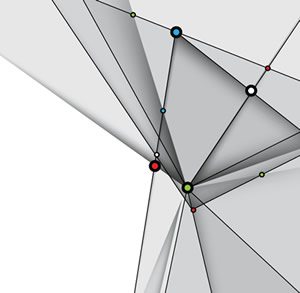Community Sustainability

ILLUSTRATION © EN-OWAI//SHUTTERSTOCK
Some of the best expressions celebrate community action, as in “all hands on deck” and “it takes a village to raise a child.” A new trend in schools is applying this philosophy to sustainability programs. Community sustainability is about engaging all parties through information sharing and collective action to develop a comprehensive green program. Community sustainability is a predominant theme in programs such as the Green Apple Day of Service, Grades of Green, and Green Seal’s GS-42 Standard for Commercial & Institutional Cleaning Services.
Too often “sustainability” is tasked to a single department or personnel — siloed from others’ roles and perspectives. Community sustainability encourages quality programs because it captures insights from various angles and ensures cooperation and accountability from different parties. The more concensus that can be achieved from various parties, the better chance for success.
The Green Apple Day of Service, which started in 2012, is a national event hosted by the U.S. Green Building Council that calls communities to come together for a day, rethink their schools, and take action on school campuses toward sustainability projects. In 2012, there were 1,250 Green Apple Day of Service projects. That number more than doubled in 2014 to 3,836.
Grades of Green, which began as a parent-run volunteer program, promotes community sustainability by acting as a support team for the broader school communities. It provides program support to schools while interacting with local stakeholders like waste haulers and government. The inclusion of a broad range of interests is critical to a school’s success in achieving support for a sustainability program. This is especially true when it comes to achieving Green Seal certification for cleaning services.
The GS-42 Standard for Commercial & Institutional Cleaning Services includes useful tactics that nurture community sustainability, including communication requirements and minimum training requirements for staff. Certified cleaning services set up systems for both internal and external two-way communications. Additionally, they develop and maintain a set of standard operating procedures in conjunction with the owners, managers, and occupants. By having open communication channels during policy development, cleaning services are encouraged to think broadly and inclusively about the sustainability of their operations.
These communications can take the form of breakout and brainstorming sessions, as well as focus groups. For example, the Howard County Public School System in Maryland, which achieved GS-42 certification in 2012, created a custodial services “Green Team” that focused on effective communication and developing the operating procedures.
Another tactic in GS-42 that supports community sustainability requires custodial staff to receive a specified amount of training each year. By explaining the green changes to established programs and framing them in the form of sustainability intelligence, the program has more buy-in, increased employee engagement across all aspects of the cleaning process, and elevates the role of a school custodian to that of a steward of the environment.
Community sustainability is a powerful philosophy in building successful school programs. By harnessing the power of the collective, programs are more inclusive and robust. Most importantly, successful community sustainability programs lay the foundation for student and staff health and children’s understanding of their environment. The Howard County Public School System serves over 50,000 students. In 2014, the Green Apple Day of Service events had an impact on the learning environments of 2.1 million students. These community sustainability programs will lead to a generation of people with developed sustainable behaviors and understandings.
Trends in Education
School Planning & Management asked experts who are involved in various education-related fields to talk about what is happening in regard to K-12 education and what they expect in the near future. The following are their thoughts on the topics of planning, design, architecture, legislation, energy management, and safety and security.
This article originally appeared in the issue of .
About the Author
Lisa Nash is the Marketing and Communications associate for Green Seal, which identifies environmentally responsible products and services and provides public education for creating a more sustainable world. For more information about Green Seal, visit www.greenseal.org or call 202/872-6400.